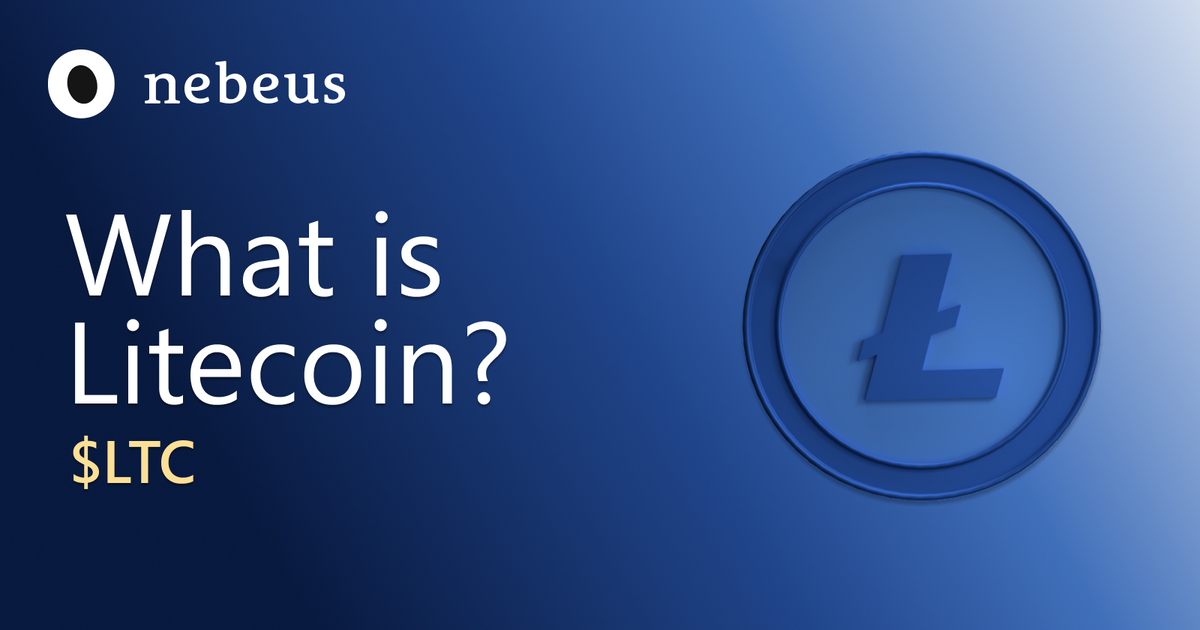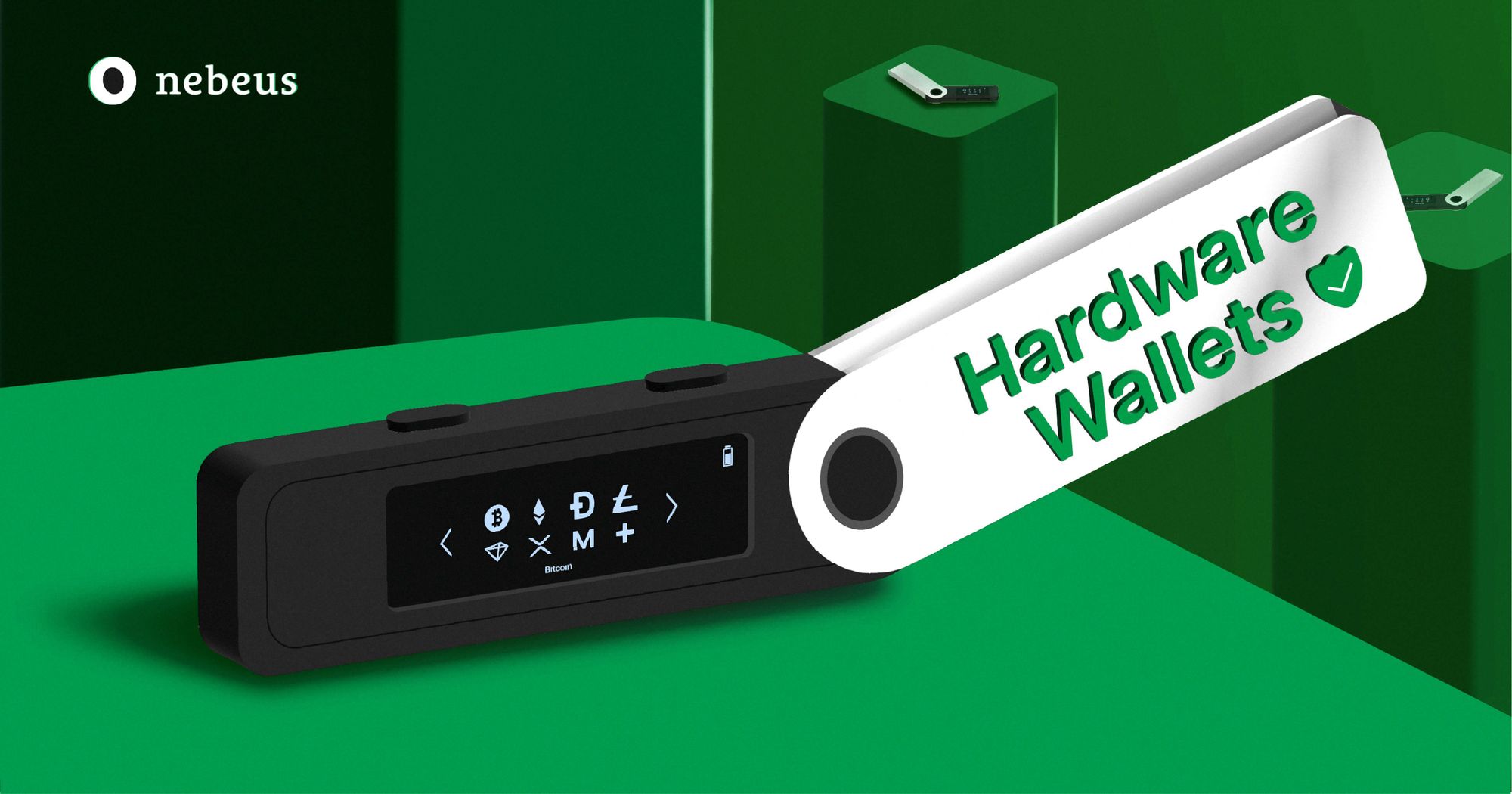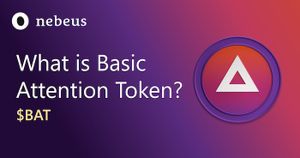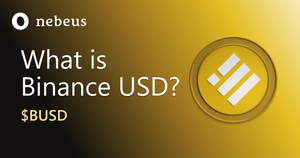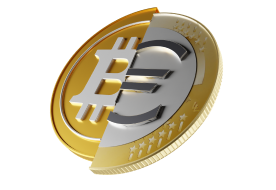“The Future of Money.”
– Litecoin
Note: This is part of Nebeus’ new Coin Analysis series, where you can discover the latest crypto coin news.
What is Litecoin? ($LTC)
In 2011, a fork in the Bitcoin blockchain led to the creation of Litecoin (LTC). It was initially created to allay the developer's worries that Bitcoin was becoming overly centralised and to make it harder for large-scale mining companies to dominate the mining process.
Although it ultimately failed to stop enterprise miners from monopolising the majority of Litecoin mining, the cryptocurrency has since evolved into a mineable coin and a peer-to-peer payment system.
What is the purpose of Litecoin?
After the release of Litecoin in 2011, which is generally acknowledged as the first successful "alternative cryptocurrency," a slew of developers attempted to increase the cryptocurrency market by forking Bitcoin's code and releasing new types of tokens and coins.
It's true that Litecoin wasn't the first cryptocurrency to fork Bitcoin's code and add its own features, but it has established a substantial market and has stood the test of time despite criticisms that it doesn't offer anything particularly unique.
To set itself apart from other cryptocurrencies, Litecoin, for instance, decided to cut down on the time it took to add new blocks of transactions to its blockchain, which is the ledger of all past and future transactions. The reasoning behind this was so that businesses wouldn't have to wait for the typical 6 confirmations (roughly an hour) before accepting Bitcoin payments as final.
However, as traders' enthusiasm for cryptocurrency waned in the middle of the 2010s, Litecoin took a more proactive approach to development, introducing groundbreaking features like Segregated Witness, both of which eventually made their way to Bitcoin.
Is Litecoin a good crypto?
Large mining pools operated by tech companies now account for the vast majority of Litecoin mining, marking a shift away from the individual miner model that previously dominated the Litecoin mining ecosystem.
The market for it is much smaller than for more widely used currencies. Despite this, it remains a highly-traded cryptocurrency, consistently ranking in the top 30 out of more than 18,000 coins monitored by CoinMarketCap.
This shows that it is still widely used despite lagging behind Bitcoin and other newer coins in terms of investor interest.
Is Litecoin still a good investment?
The Litecoin mining algorithm was designed to make it harder for specialised mining hardware to succeed, but this strategy ultimately backfired. (Even though commercial-grade mining hardware is the norm now, some people still mine Litecoin as a hobby.)
However, Litecoin wasn't designed to be used as either a store of value or a speculative investment. Although this is how some investors utilise LTC, others do not. To determine whether or not Litecoin is a good investment for you, it is recommended that you speak with a financial advisor.
Does Litecoin still have a future?
Since then, Litecoin has become a great place to try out new features for the cryptocurrency industry.
Litecoin adopted the Segregated Witness protocol in 2017, which allows cryptocurrency networks to include more transactions per block. By the end of that year, Litecoin had completed its first Lightning transaction, demonstrating its ability to employ a multi-layer architecture.
Litecoin's popularity among traders stems in part from the fact that its supply can be predicted to rise around supply reductions and to keep up with Bitcoin's growth when the latter's value rises.
To what extent investors, traders, cryptocurrency fans, governments, and the general public will view Litecoin in the future is a question that cannot be answered with certainty at this time. Governments are keeping a close eye on cryptocurrency, new cryptocurrencies are being created daily, and the markets are highly unpredictable.
Who founded Litecoin? (LTC)
Since its inception in 2011, Litecoin has been closely linked to its creator and creator, Charlie Lee, a computer scientist and MIT alum.
Later in life, before he created Litecoin, Lee worked for Internet behemoth Google in the field of technology. A few years later, in 2013, he became Coinbase's Director of Engineering for their cryptocurrency exchange.
After joining the company, Lee stated in 2017 that he no longer considered Litecoin development to be a top priority and instead focused on encouraging others to "own bitcoin and hold bitcoin."
At the end of 2017, Lee decided to leave Coinbase to focus solely on developing Litecoin. Lee is now the CEO of the Litecoin Foundation, an organisation that supports the cryptocurrency's development.
Is Litecoin safe?
Litecoin was created to be a practical means of exchanging digital assets between buyers and sellers, with confirmations of transactions occurring instantly. To ensure the safety of the network, it employs a proof of work (PoW) consensus method, just like Bitcoin. Its network operates on a different hashing algorithm than Bitcoin, though.
Litecoin uses Scrypt hashing because it is more resistant to hardware brute-force attacks than other functions. Litecoin's security has been proven over the course of a decade by the fact that it has not been significantly breached.

How Many Litecoin (LTC) Coins Are There in Circulation?
The number of Litecoins (LTC) that can ever exist is capped at 84 million, and the rate at which new LTC is added to the economy is capped as well.
How high will Litecoin be in 5 years?
In the next five years, the average price of Litecoin is projected to be around $170, with a maximum projection of $180, as reported by CryptoNewsz.com.
How high can Litecoin go?
Litecoin's price has already surpassed its all-time high in 2017 and set a new record high in the year 2021. If the price makes a new high after making a new high, then the trend is considered to be upward. Since the peak was reached at the beginning of 2021, Litecoin has started to decline, but it now seems to be retesting previous resistance that has now turned into support. If the cryptocurrency's support can continue to hold, it will signal the beginning of a new bull market and may make a move resembling what Bitcoin has made recently.
Can Litecoin reach $1,000?
Last year, Elevate Trading's founder, Nebraskan Gooner, predicted that Litecoin could soon reach $1,000 per token. He predicted a rise to $1,500 in the following years.
According to market forecasts like these, Litecoin's price will reach $1,000 within the next decade. This is because investor interest in LTC ensures that the industry will maintain its history of phenomenal growth.
In the next five years, miners will exhaust 88% of Litecoin's supply. If LTC is to drop to $1,000 in the next five years, the network will need a market cap of $74 billion. But it's tough to make reliable forecasts like that.
What is the highest LTC price ever?
There were two peaks in 2017 and 2020 for the Litecoin cryptocurrency, with values around $250, but by 2022, the cryptocurrency had fallen below that level. One Litecoin token was worth $97.46 in U.S. dollars as of February 20, 2023. The price of Litecoin has shown significant month-to-month fluctuations over the past few years. If you want to read more about Litecoin's price, go and check out Cryptopolitan's price prediction until 2032.
What's the difference between Litecoin and Bitcoin?
Litecoin, which was created from a fork of the Bitcoin code, is functionally similar to Bitcoin. So, if you're familiar with Bitcoin, you'll have little trouble grasping Litecoin's inner workings.
- Privacy – Like Bitcoin, Litecoin can be used anonymously. With the MWEB (Mimblewimble Extension Block) upgrade, both parties to a transaction can maintain their privacy by choosing whether or not to reveal the transaction's amount to third parties.
- Transaction Speed – There are 54 TPS for Litecoin transactions, compared to 5 TPS for Bitcoin.
- Decentralisation – By using the Scrypt hashing algorithm to fuel the Proof-of-Work consensus mechanism, Litecoin allows a greater number of people to join the network and take part in the mining process with a lower entry barrier. As a result, mining power is spread more evenly across the network and is no longer monopolised by a few large entities that can afford specialised hardware like application-specific integrated circuit (ASIC) miners.
- Scalability – Litecoin's block generation time of 2.5 minutes is four times faster than Bitcoin's block generation time of 10 minutes. Therefore, Litecoin's network is able to accomplish a greater throughput.
- Security – Scrypt hashing is used in Litecoin because it is more resistant to hardware brute-force attacks. Litecoin has proven to be a trustworthy cryptocurrency because it has not been significantly compromised in a decade.
- Transaction Fees – Litecoin's transaction fees are one-fiftieth of those of Bitcoin.
How does Litecoin work?
To recap, Litecoin (LTC) is a digital currency that can be owned and traded digitally and has a software-based cap on its total supply of 84 million coins.
Similar to Bitcoin's proof-of-work mining, Litecoin's version allows anyone with access to sufficient computing power to add blocks to the blockchain and be rewarded with newly minted Litecoin.
Is Litecoin better than Bitcoin?
Litecoin is different primarily because it employs a different mining algorithm and because it seeks to facilitate the completion of transactions more rapidly.
Market participants have largely seen these initiatives as consistent with Litecoin's values rather than as fuel for competition between the two. (Unlike many alternative cryptocurrencies, the project has always been framed as Bitcoin's sidekick.)
As part of its initial branding, Litecoin was dubbed "silver to bitcoin's gold," a phrase that has stuck with the cryptocurrency ever since.
Step-by-step guide on how to buy LTC using Nebeus
To buy Litecoin on Nebeus:
- First, create an account and verify your identity. (You can do this online via the website, or the Nebeus app is available on both Google Play and the App Store).
- Then, deposit funds into your Nebeus wallet. Users can deposit money with their bank card, Apple Pay, or a SEPA transfer.
- Once you have funds in your wallet, you can buy the cryptocurrency of your choice, such as Litecoin ($LTC).
Don’t forget that you can also use Nebeus to access money accounts and take out crypto loans. To find out more about how Nebeus works, head over to the Help Center.
Conclusion
Ready to get involved with Litecoin already? Join its thriving community on one of its channels:
You can sign up for a Nebeus account to buy, stake, and hold your Litecoin investment.
La inversión en criptoactivos no está regulada, puede no ser adecuada para inversores minoristas y se puede perder la totalidad del monto invertido.


